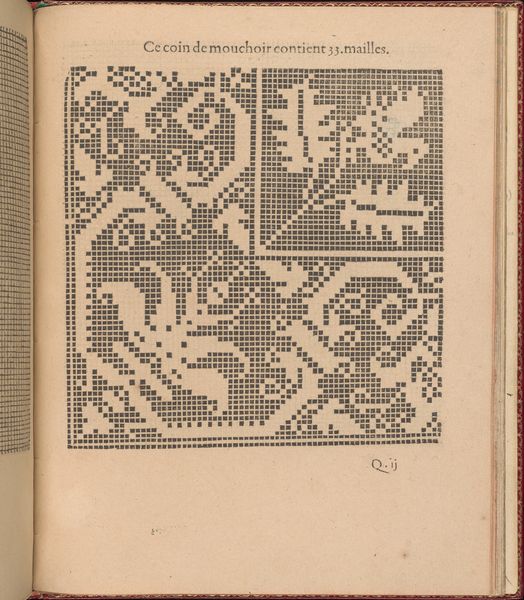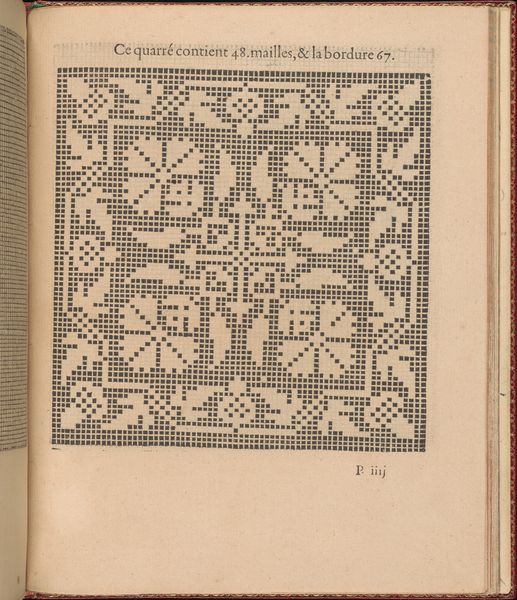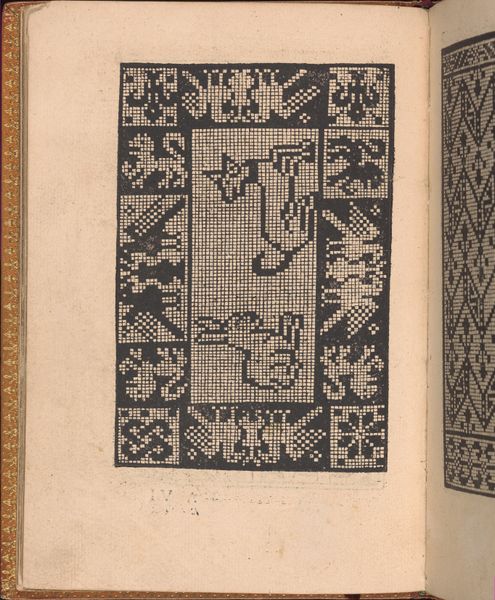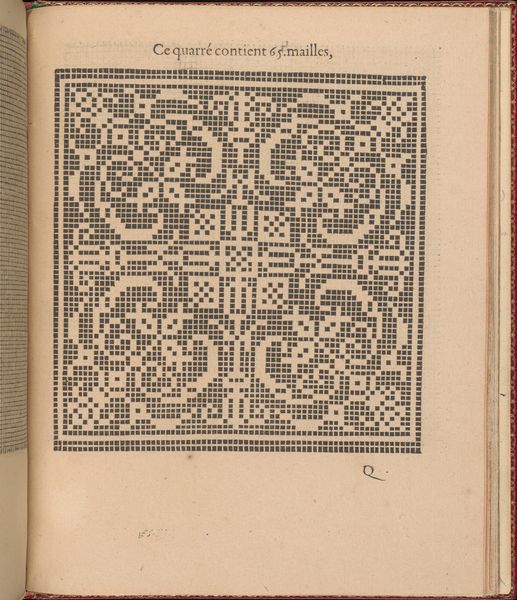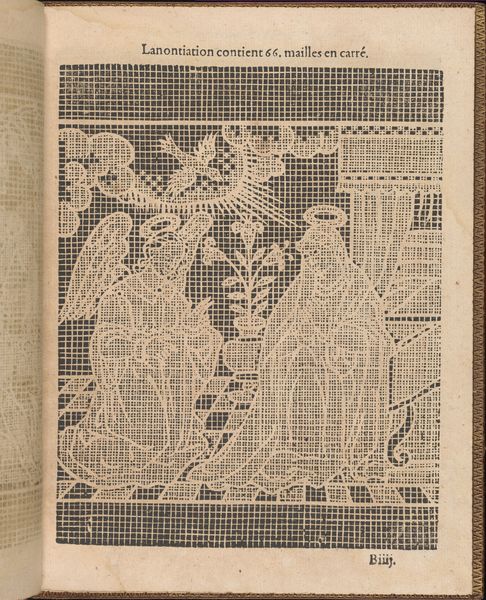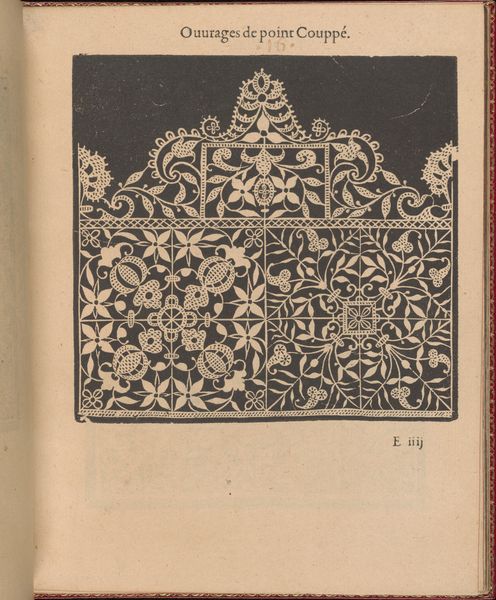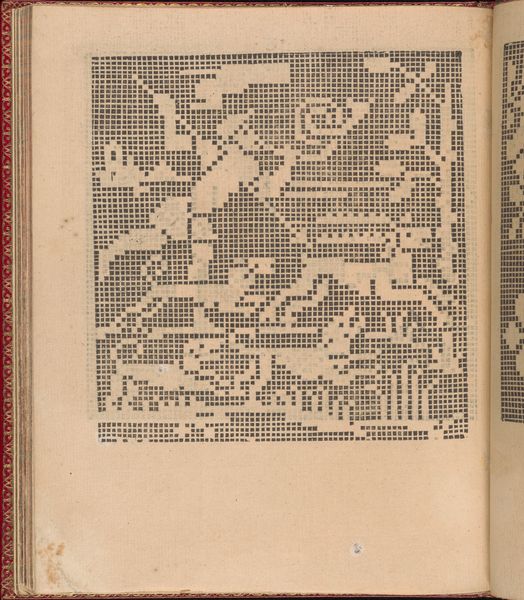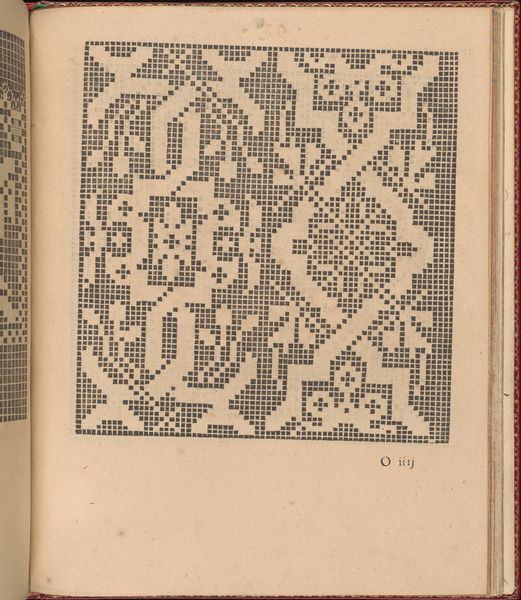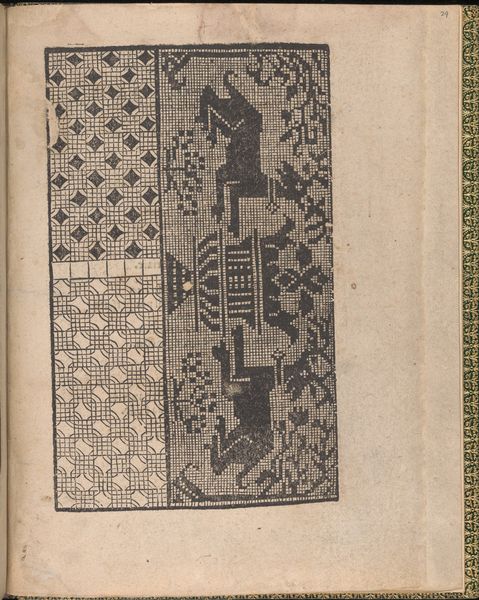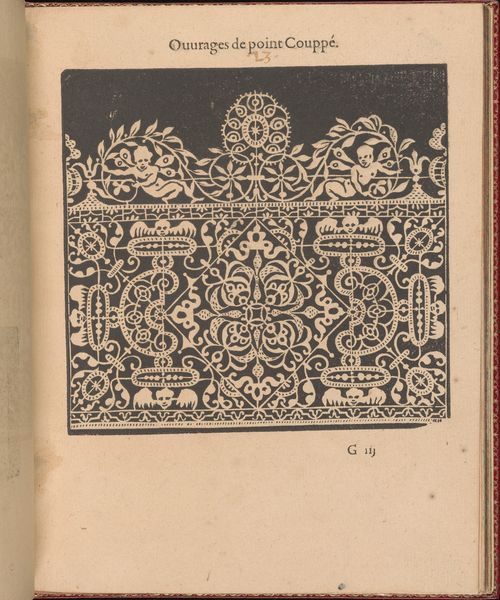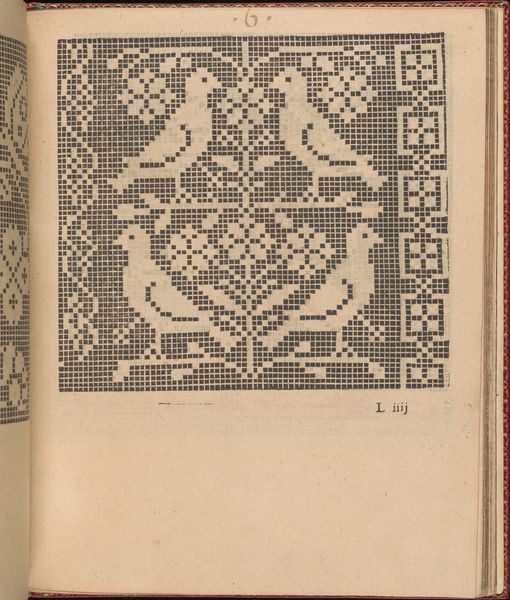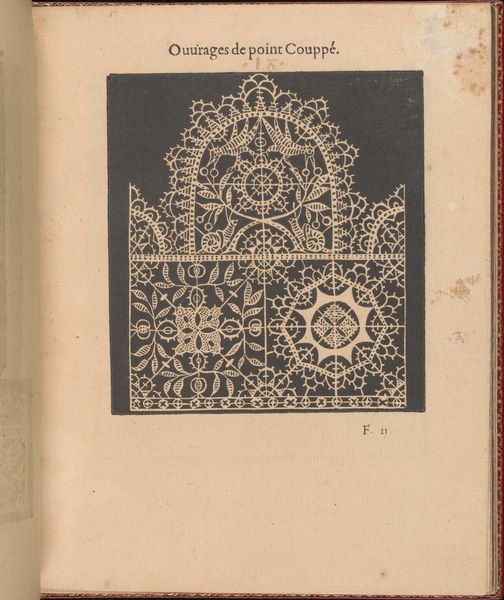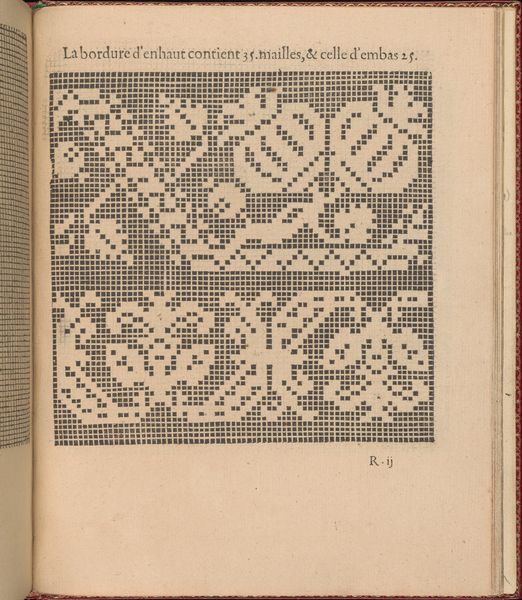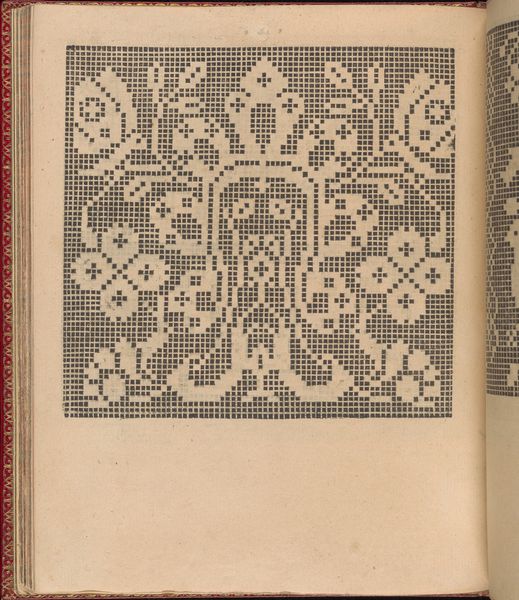
Les Singuliers et Nouveaux Portraicts... page 68 (recto) 1588
0:00
0:00
drawing, print, paper, ink, engraving
#
drawing
#
narrative-art
#
animal
# print
#
book
#
figuration
#
paper
#
11_renaissance
#
ink
#
line
#
engraving
Dimensions: Overall: 8 1/16 x 6 5/16 in. (20.5 x 16 cm)
Copyright: Public Domain
Editor: This is an intriguing page from "Les Singuliers et Nouveaux Portraicts..." created in 1588 by Federico de Vinciolo. It’s an engraving, seemingly a design for embroidery or lace, depicting a deer in a stylized landscape rendered entirely in a grid. What I find interesting is how such a rigidly structured medium conveys a natural scene. What do you make of this piece? Curator: It's fascinating how De Vinciolo intersects the natural world with the very structured world of textile production. This wasn't just decorative, you know. Lace-making in the 16th century was deeply intertwined with gender and economics. Women were the primary producers, and their skills translated directly into economic power. It raises questions about how labor and artistry intersect. Editor: So, this pattern wasn’t simply about aesthetics; it represented a form of agency for women at the time? Curator: Precisely! This image, rendered in this grid-like fashion, was a blueprint for women to engage in economic activity and even assert a creative identity. Also, notice how the text gives the exact ‘counts’ for the image—’66 mailles en hauteur, 55 en longueur.’ How might precision empower the maker? Editor: The grid, in a way, democratizes the image. Anyone with the skill to follow it can recreate this 'singular portrait.' I never thought of it that way, though – as a coded form of empowerment through craft. It completely changes how I view this! Curator: Right! It forces us to ask, what is the power encoded in these seemingly simple forms of artistic expression? It challenges us to situate De Vinciolo's work within a wider history of art, craft, gender and power. Editor: This makes me think about how even seemingly simple crafts can hold such deep significance, how patterns like these reflect the complexities of their time and offer insights into the lives of the people who made and used them. Curator: Indeed. Now we're asking questions about the work that truly matter!
Comments
No comments
Be the first to comment and join the conversation on the ultimate creative platform.
